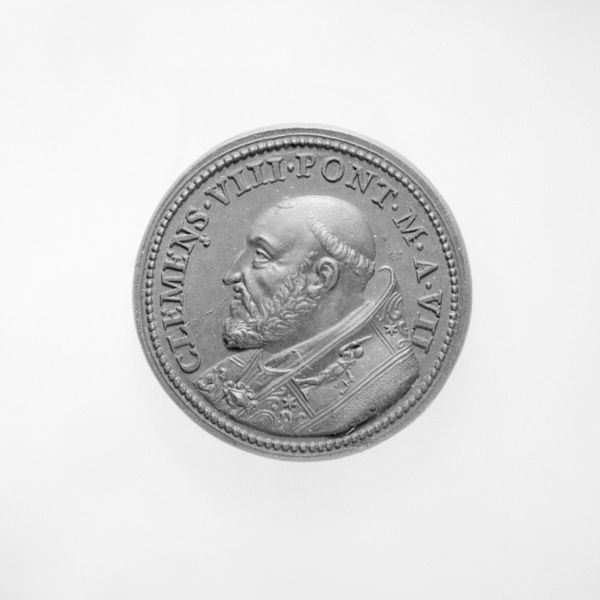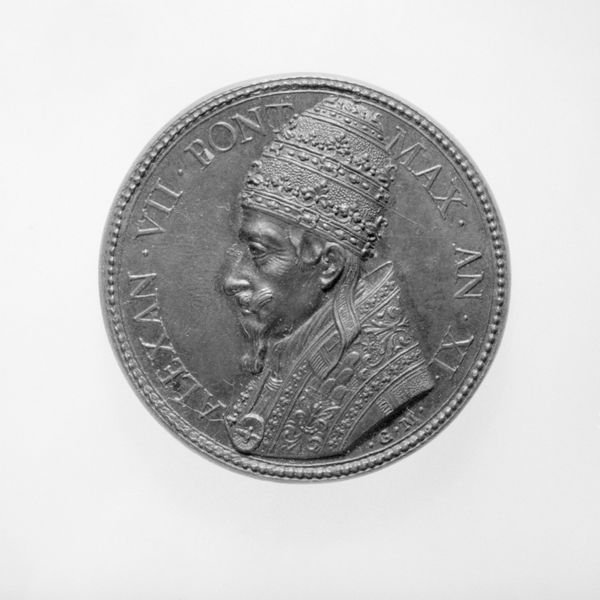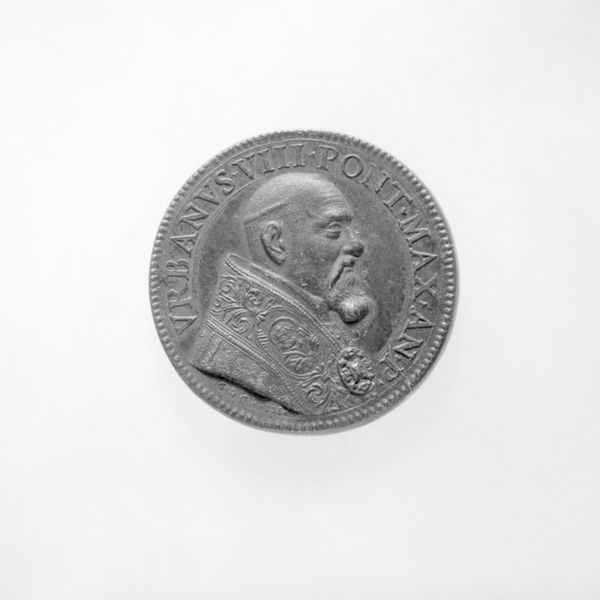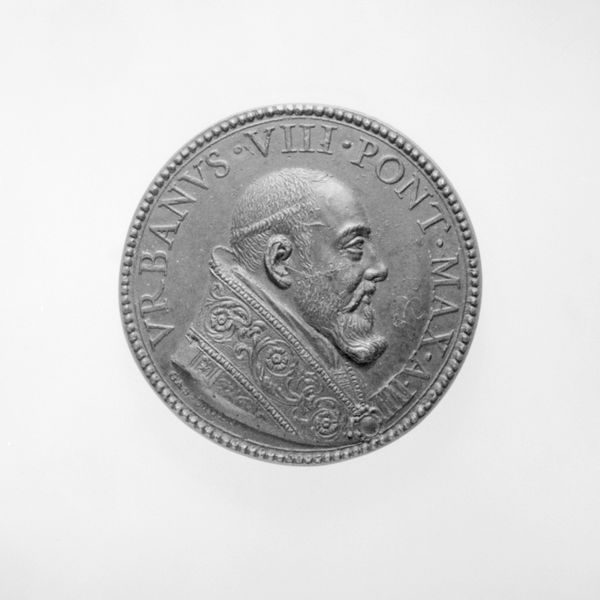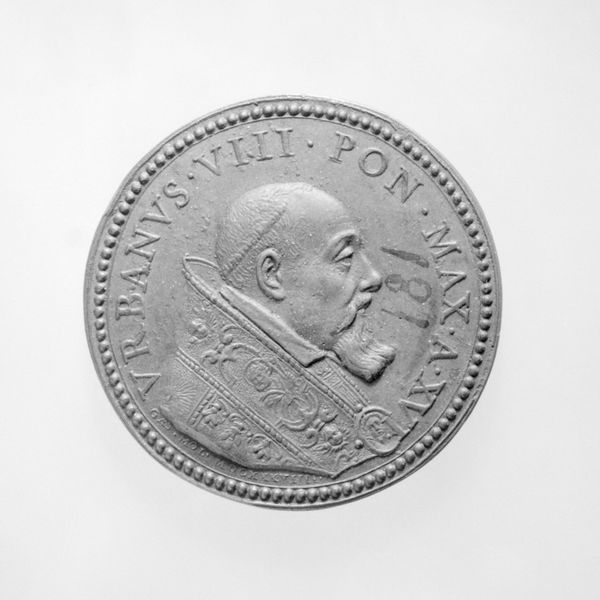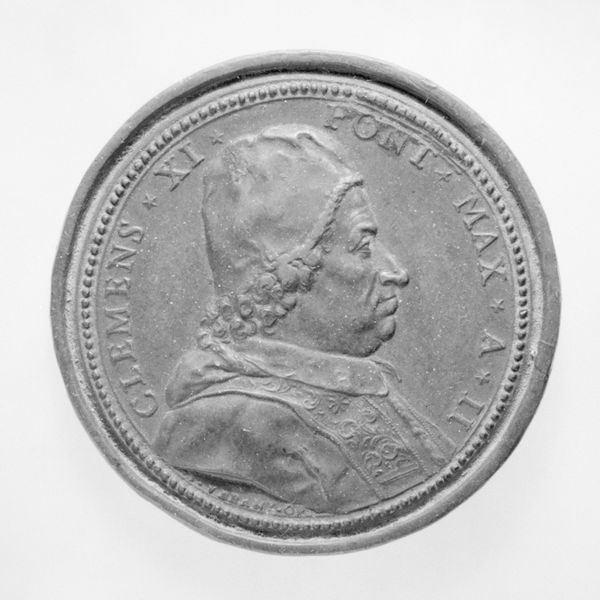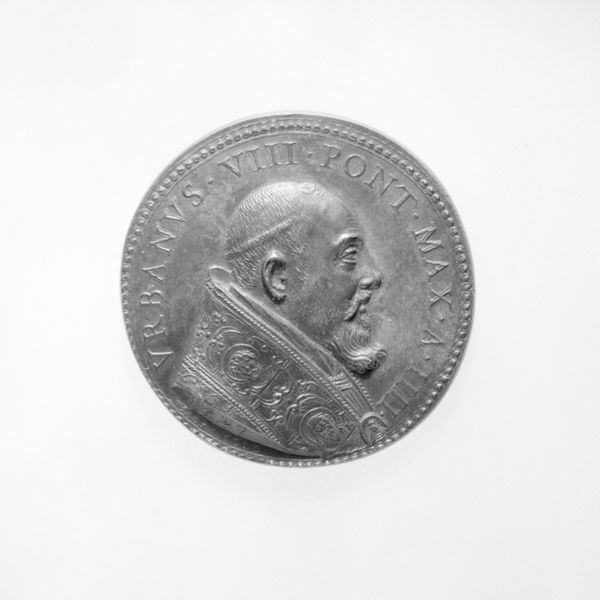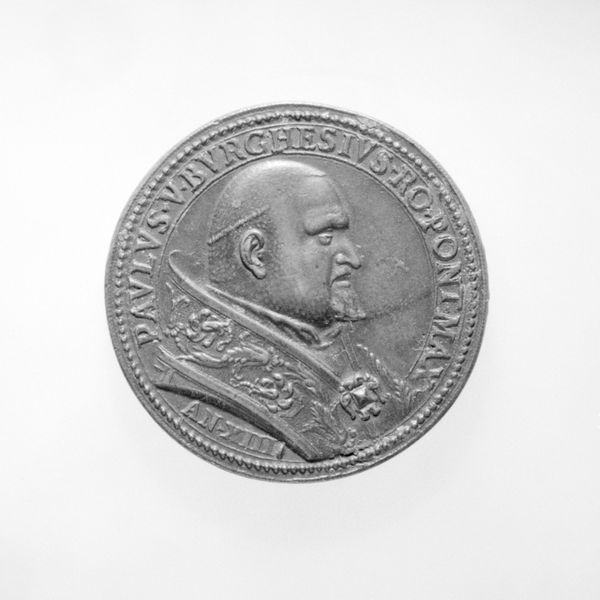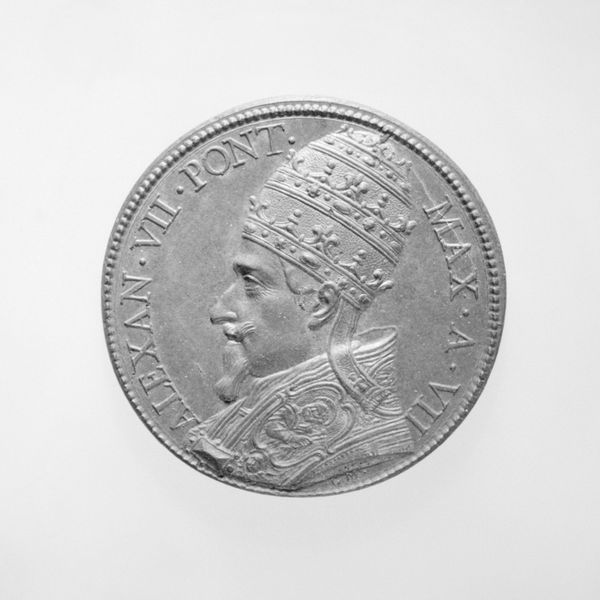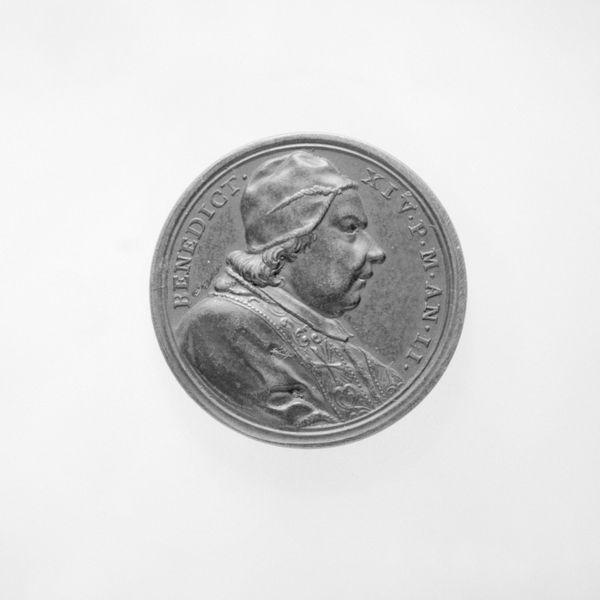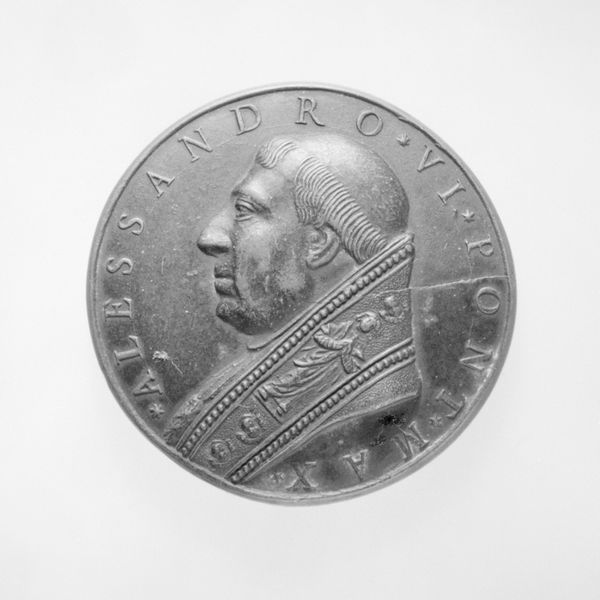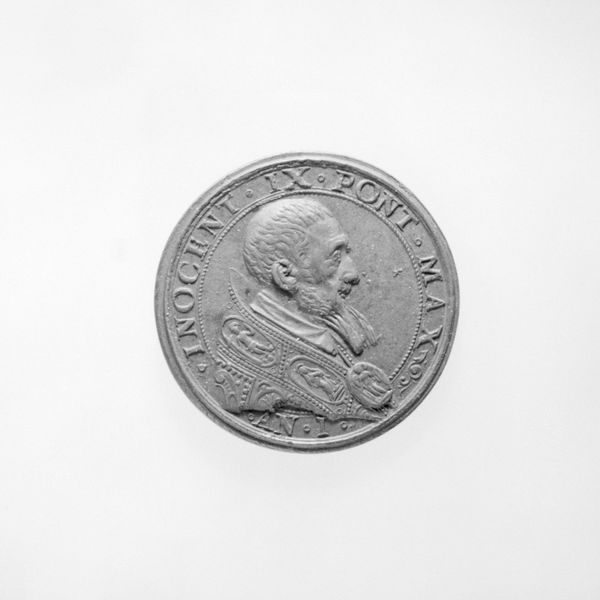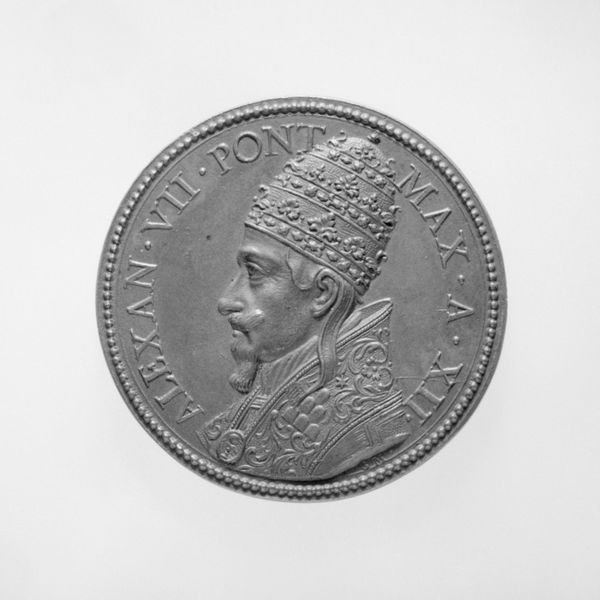
bronze, sculpture
#
portrait
#
medal
#
baroque
#
bronze
#
sculpture
#
decorative-art
Dimensions: Diameter: 1 5/16 in. (3.3 cm)
Copyright: Public Domain
Curator: Here we have a bronze medal created in 1667, during the pontificate of Clement IX. The artist was Alberto Hamerani. It's currently held at the Metropolitan Museum of Art. Editor: It feels...solemn, wouldn't you say? Almost like a coin passed down through generations, filled with stories and secrets etched into its surface. The profile is striking – quite austere. Curator: These medals, and indeed, portraiture in general, were tools in solidifying power and propagating an image of the papacy as stable and enduring. The choice to present Clement in profile mirrors ancient Roman coinage, consciously linking him to the authority of the Caesars. The papacy consistently grappled with secular power during the baroque era, using art to claim and maintain dominance. Editor: Absolutely, that's clear from the sharp features—it's not just capturing a likeness, is it? The face is stoic, not inviting. Almost defiant. I find myself wondering what he was truly like, this Clement. Did he approve this stern image of himself? Or was it pure political theatre, this casting? Curator: Exactly. The medal, with its inscription *Clemens IX Pont. Max. Anno I*, marking the first year of his pontificate, speaks directly to this assertion of authority. Consider the broader implications: the Counter-Reformation was in full swing, and papal authority was consistently challenged. These objects are a form of propaganda. Editor: Propaganda that ages remarkably well! I'm just struck by the timelessness of it all. It’s heavy, you know? The bronze, the weight of the church it symbolizes, literally cast into form. Did ordinary people ever get to handle one of these, or were they largely destined for the hands of the already powerful? Curator: Medals like these served various functions. They were indeed gifts for high-ranking officials, dignitaries, and sometimes produced in larger numbers for distribution amongst the faithful. A crucial aspect to remember is that patronage within the church was highly contested. Medals and portraits like these helped forge strategic relationships, legitimizing both artist and patron. Editor: That brings it all into focus. From our contemporary position, it’s so easy to read this as this purely “religious” object, divorced from material reality. Thanks for drawing my attention to that dynamic interplay of influence! Curator: The pleasure was all mine. Examining this medal is a potent reminder of the deeply political, carefully constructed imagery through which power operates and exerts its influence even now.
Comments
No comments
Be the first to comment and join the conversation on the ultimate creative platform.
